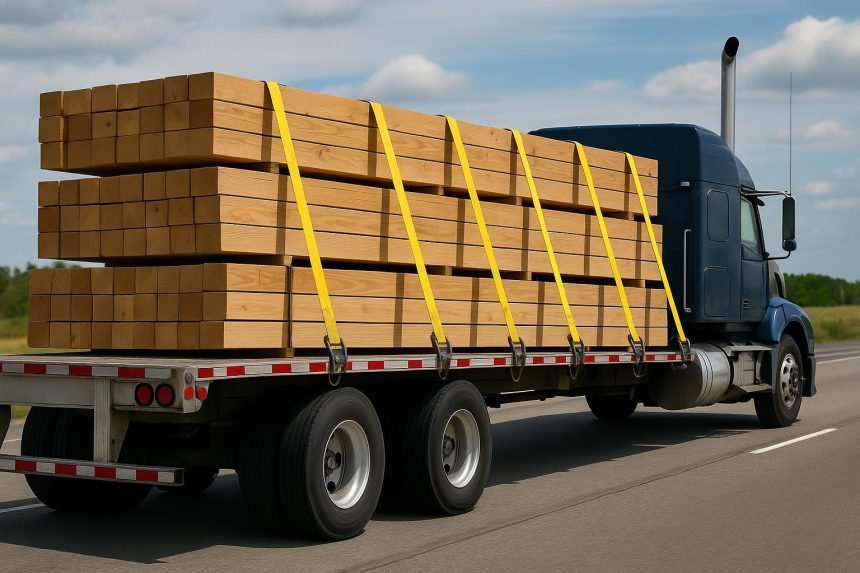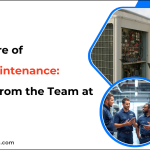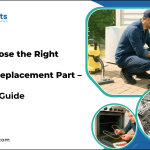As a flatbed truck driver, your role is pivotal in ensuring the safe and efficient transportation of goods across vast distances. Mastery of cargo securement rules is not merely an industry expectation but a fundamental responsibility that safeguards both your livelihood and public safety. Whether you’re looking for an 18-wheeler accident lawyer, this article serves as a comprehensive guide to the critical regulations and best practices governing cargo securement.
Understanding the Basics: Cargo Securement Rules for Flatbed Trucks
Regulatory Framework
Understanding the regulatory framework is crucial for flatbed truck drivers. The Federal Motor Carrier Safety Administration (FMCSA) outlines comprehensive cargo securement rules to ensure the safety of cargo. These regulations outline the procedures for securing cargo, with a focus on preventing shifting, falling, or leaking during transportation. It’s essential to familiarize yourself with these guidelines to avoid penalties and ensure safety on the road.
Key Components of Cargo Securement
Cargo securement involves several components that work together to stabilize the load. These include tie-downs, which are straps or chains used to anchor cargo, and blocking and bracing, which prevent movement. Properly balancing the load is also crucial for maintaining vehicle stability and control. By mastering these elements, drivers can enhance safety and compliance.
The Importance of Proper Cargo Securement in Flatbed Trucking
Ensuring Safety on the Road
Proper cargo securement is paramount in flatbed trucking to ensure the safety of not only the driver but all road users. When loads are correctly fastened, it minimizes the risk of cargo shifting or falling, which can lead to severe accidents. Securing devices, such as tie-down straps and chains, must be regularly inspected and maintained to uphold their integrity.
Adhering to Regulations
Compliance with cargo securement regulations is essential for every flatbed truck driver. Adhering to standards set by authorities like the Federal Motor Carrier Safety Administration (FMCSA) not only avoids hefty fines but also underscores commitment to safety practices. Familiarizing yourself with these guidelines ensures that cargo is transported securely and within legal limits.
Preserving Cargo Condition
Effective securement techniques protect the cargo itself from damage during transit. By preventing movement, you can avoid scratches, dents, and other forms of damage that can diminish the value of the goods being transported. This attention to detail enhances customer satisfaction and maintains the integrity of your service.
Key Equipment and Tools for Securing Cargo
Essential Equipment
Securing cargo on a flatbed truck requires a range of specialized tools and equipment to ensure that your load remains stable and safe throughout transit. Load binders, commonly referred to as chain binders, are essential for securing cargo with chains. They come in two main types: ratchet and lever binders, each offering unique advantages in terms of ease and tension strength.
Reliable Tie-Downs
Chains and straps are the backbone of cargo securement. Heavy-duty chains are indispensable for securing large, heavy loads, while nylon or polyester straps are preferred for lighter items due to their flexibility and ease of use. It’s vital to inspect these tools regularly for any signs of wear or damage to maintain their reliability.
Protective Accessories
To prevent damage to both the cargo and the securing equipment, corner protectors and edge protectors are invaluable. These accessories distribute pressure across the load, reducing the risk of cutting through straps or damaging goods. Consider using tarps as well, which not only protect against the weather but also provide an additional layer of security against shifting loads.
Common Mistakes Flatbed Truck Drivers Make with Cargo Securement
Overlooking Proper Weight Distribution
A frequent mistake made by flatbed truck drivers is neglecting the importance of proper weight distribution. Unevenly distributed loads can affect vehicle stability, potentially leading to accidents. Ensure the weight is evenly distributed across the trailer to maintain control and safety.
Inadequate Use of Tie-Downs
Another error is the insufficient use of tie-downs. Many drivers underestimate the number of tie-downs required, compromising cargo security. The Federal Motor Carrier Safety Administration (FMCSA) provides guidelines on the minimum number of tie-downs needed based on cargo weight and length. Adhering to these requirements ensures that your cargo remains stationary during transit.
Ignoring Regular Load Inspections
Failing to conduct regular load inspections is a common oversight. It’s crucial to check your load periodically, especially after traveling a few miles. Vibrations and truck movements can loosen restraints, so frequent inspections help mitigate such risks, enhancing overall cargo security.
Final Thoughts
In navigating the complexities of cargo securement, you hold the key to not only ensuring the safety of your load but also upholding the integrity of the entire transport network. Mastery of these rules is not merely a regulatory obligation; it is a professional commitment to excellence. Whether you’re looking for an 18-wheeler accident lawyer, prioritizing thorough inspections and adhering to best practices helps contribute to a safer roadway for all.
Lynn Martelli is an editor at Readability. She received her MFA in Creative Writing from Antioch University and has worked as an editor for over 10 years. Lynn has edited a wide variety of books, including fiction, non-fiction, memoirs, and more. In her free time, Lynn enjoys reading, writing, and spending time with her family and friends.















